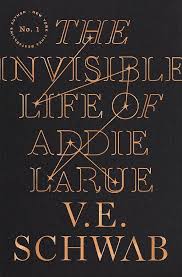Chapter XIII
byChapter XIII begins with a profound moment of realization for Adeline, marking the beginning of a long, tormenting journey. On the morning of July 30, 1714, she wakes to discover that she has been forgotten by all—erased from the memories of everyone she has ever known. This revelation shocks her to the core, as she comes face-to-face with Isabelle, a figure from her past who once embodied warmth and trust, but now stands as a stranger to her. Isabelle’s confusion over Adeline’s identity is the first indication of how deeply the curse has embedded itself into her life, and it triggers a cascade of emotions: grief, loss, and the terrifying realization that everything she once held dear is slipping away from her grasp.
The narrative follows Adeline through the streets of Villon-sur-Sarthe, where she is trapped in an existence that no longer recognizes her presence. In an attempt to ground herself in some semblance of reality, she turns to Isabelle for support, only to find that her once-familiar world has turned alien. Isabelle, despite showing initial kindness by tending to Adeline’s invisible wounds, is unable to recall the history they once shared, reinforcing the isolation that defines Adeline’s existence. The more Adeline tries to remind Isabelle of their past, the more her identity seems to fade into the ether, slipping through the cracks of time and memory like water. This interaction exemplifies the cruel and unrelenting nature of her curse—no matter how much she yearns to be remembered, her presence is nothing but a fleeting shadow.
When George, Isabelle’s husband, returns to the scene, the tension heightens, and Adeline is thrust back into her solitude, once again forced to leave the place she had hoped might offer her refuge. As she walks away from the familiar streets of her childhood, she is drawn to her past again, trying to find remnants of her former life in the objects she once held dear. But nothing she encounters brings her the comfort or sense of connection she seeks. The objects—the shoes, the dress, the stick—remain meaningless and powerless to restore the life she had lost. The deeper she searches for something tangible to cling to, the more she realizes that nothing will ever be the same. This failure to reconnect with her past only reinforces the depth of her curse.
Adeline’s encounter with Henri, Isabelle’s son, seals her realization that even the people who should be closest to her no longer remember her. This painful cycle of trying to reconnect and finding no recognition only serves to deepen the wounds of isolation and despair. Adeline’s curse is more than just a loss of memory; it is a permanent severing from everything she once knew and loved, a fate that keeps her locked in a world that refuses to acknowledge her. The cruelty of her condition becomes evident with every failed attempt at recognition, and she is left to grapple with the weight of her own existence, which feels increasingly meaningless.
As Adeline comes to terms with the full weight of her curse, she finds herself embracing a life of solitude, accepting that seeking recognition or connection will only bring more suffering. The realization that she will never be remembered forces her to relinquish any hope for a future filled with human bonds or shared experiences. Her journey becomes one of survival rather than living, as she learns to navigate a world that will never acknowledge her presence. The sense of identity she once held so dearly slips further and further from her grasp, leaving her adrift in a sea of forgotten memories and unreachable desires. In a final, heartbreaking gesture, she writes a letter to her father, knowing it will never be delivered, symbolizing the ultimate severance from everything she holds dear.
This chapter delves into the emotional turmoil and existential pain of a woman condemned to be forgotten by all. Adeline’s struggle is not just with the physical absence of those she loves but with the psychological and emotional isolation that comes from being erased from existence. The narrative explores deep themes of memory, identity, and the nature of human connection, highlighting the fragility of relationships and the haunting implications of a life lived in isolation. Her story becomes a powerful meditation on what it means to exist without leaving any mark, without being remembered, and without ever truly belonging anywhere. Through her journey, the reader is confronted with the painful truth that sometimes, the greatest loss is the loss of connection, and the deepest wounds are those inflicted by forgetfulness.


